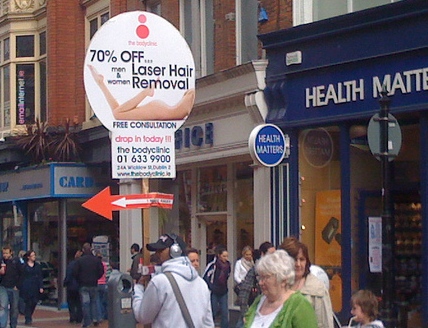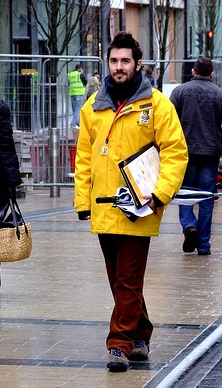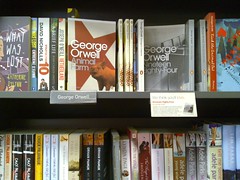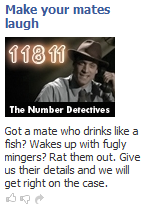On this team we fight for that inch. On this team we tear ourselves and everyone else around us to pieces for that inch. We claw with our fingernails for that inch. Because we know when add up all those inches, that’s gonna make the fucking difference between winning and losing! Between living and dying! I’ll tell you this, in any fight it’s the guy whose willing to die whose gonna win that inch. And I know, if I’m gonna have any life anymore it’s because I’m still willing to fight and die for that inch, because that’s what living is, the six inches in front of your face.
Al Pacino in Any Given Sunday.
I’ve been thinking about marketing for a while and what works and what doesn’t work and I wonder if the distance between the marketing and us is a factor. Close and personal marketing is where it really has a positive effect but there are many obstacles and filters preventing this. Good. There should be.
Think about the various forms of marketing and advertising that are there. They’re sent out from people thousands of miles away and made and distributed hundreds of miles away. With old tech the cost of sending a tailored message to one person was huge but a bland message to thousands was cheap. Broadcast. With new tech it is becoming quite cheap and almost free to market to every individual and respond to each and every piece of feedback from every individual.
The Internet can be thousands of miles away or it can be inches depending on who uses it and in what way. It can remove geographical restrictions but at the same time add new ones that can slow sales and marketing. The biggest one is the inability to personally react to a person.
The best form of marketing is all about how close it is to you and how it reacts to you and gives you what you need, not what they need you to do. Long-distance relationships are hard to do.
Consider some of these forms of marketing:
TV and radio – thousands of miles to dozens with Satellite or broadcast from a tower. Shotgun approach to marketing but with advertising as well as TV shows and their content. Barely knows anything about you, they can’t react to you. Tethered to JNLR figures. The online equivalent is a website, the plain old brochureware type sites, splash page or no.
Billboards – Big large posters hundreds of yards away. Can know a little more about you due to your location and from rough surveys. Still doesn’t know a lot about you, not age, gender or interests. “Works in financial district”, oh great. The online equivalent are banner ads (thus the name).

Guy with sign in town – Local but broadcast
50 feet to three feet away. Holds the sign announcing what they do. Don’t know you, don’t make effort to know you. The online equivalent is a website, maybe these are banner ads that guess stuff based on your IP address. These are people announcing crap on their Twitter profile that use it as a one way method to get news out there. While they’re in your local area like the town or twitter, they’re not actively contributing.

Chugger marketing
It’s personal. Some of the nasty creatures put their hand out which many people instinctively respond to by matching it. Then they grasp on and try to sell. These are the people who are conferenes put their hand up to ask a question and instead promote the work they’ve done. “I’ve found when I did X work for a client that”. Online these are the people that respond on mailing lists, LinkedIn, blog comments and Twitter whoring their stuff and not actually giving a damn if they are relevant or not to you. (Pic above from Lette)

Photo owned by markhillary (cc)
Bookstore Recommendations
Did you ever notice the personal recommendations from Waterstone’s staff on little cards on the bookshelves? A person recommending something to you. It has a little more power than just a “buy this book” type card. The online equivalent is a blog of a business recommending products or highlighting a recent product. Amazon tries to do it but it’s automated, cold and misfires a lot.
Online Reactive Marketing:
Google Adwords are a good example of designing ads based on what you want. You tell Google what you want when you enter a search term and Google spits it back to you in the results but it also acts as a guide to commercial companies that want your attention. It in a way reminds me of the very competitive restaurants you walk past in various holiday resorts. You go down the streets hunting for food and the salespeople try and sell you the restaurant’s charms.

Facebook demographic marketing
Facebook don’t know what you want. You’re on a social network, not searching. So they just make the ads on it much more personal. They’re still ads though and as yet are not based on your actions or your wants. They know lots about you but they can’t see your reaction and respond to it. It’s getting personal but not personal enough and is done on Facebook and when an ad is placed on a profile it’s in conjunction with 2-3 other advertisers too. That dilutes the message too. Unlike Google Adwords, the inclination to click on the ads isn’t strong. They do not answer the question in your head or one that you asked a few minutes ago, do they? The offline equivalent of this is loyalty cards in Dunnes or Brown Thomas.

Photo owned by Rachel from Cupcakes Take the Cake (cc)
Value added local marketing – Austin in Bubble Brothers’ shop in the English Market
Austin is two feet away – you have a relationship, communications are two way. You chat about the weather, you bring in local events, you ask Austin about wines and what would work best with what food. You use his expertise, he shares it with you. He’ll recommend a few selections and ask your price range. You know he’s not there to make you pick the most expensive bottle. You’ll come back and he’ll ask how you got on with that wine. The online equivalent is a blog and leaving comments or going on Twitter and asking @bubblebrothers direct.
My friend/my work colleague/my shared situation person
In the office you might ask for a recommendation for a good Italian restaurant or back to the wine idea, you might ask for recommendations on a good Italian red wine. This shared space can be virtual where you can ask in the status update in Facebook or ask on Twitter. You get answers back from the personal network you have. Anyone recommend some wine to go with this? Online you might see Mike from Curious Wines on Twitter reply to that information request and you’ll respect his opinion as he’s the wine expert or you might respect that of an office colleague who knows a bit about wine. Being of use to the wine searcher or to the person the wine searcher goes to is personal marketing. It’s close enough to be reactive and works well enough that the relationship will remain personal over time.
As a company or a marketer, how are you fighting for those inches? How are you getting to know your customers and letting them get to know you?

Lets not forget Email. And here I am talking about “close and personal” marketing, not the awful abomination that Email marketing has become.
If you have a website, make your email address clear on it. For many of our markets, that will be the preferable medium for interaction.
2 Examples:
First. My brother’s new business website, complete brochure-ware, led to two very strong enquiries from Singapore and Oslo via email within a month of go-live. Instant responses have led to positive developments.
Second: An Irish company that many of us respect and look to as a role-model have not responded to my email to their sales@ address 7 days ago. They have a blog and a twitter account, but no follow up on my email.
Inches lost.
Damien
Having read this blog I am well impressed and can’t wait to have myself set up perhaps if I am having any grief I shall call you
(was at the gig last night Mediation )
Cheers Frank
It’s hard to know which battles are going to decide the war, but instinct suggests that paying attention to our customers and dealing honestly with them is not a losing strategy.
Face-to-face isn’t always the easiest method, though it’s the best; and with a bit of effort on our part, the technological equivalents of face-to-face – from telephone to twitter – can be more or less full synonyms of meeting people in the flesh. Without the bit of effort, they tend towards euphemism.
Face-to-face conversations with consumers are like the Holy Grail for advertisers & marketers alike. We would give our eye teeth for the opportunity to have richer, more intimate and therefore increasingly loyal relationships with our consumers, but they’re not easy to come by and there lies the problem.
We need broadcast media such as TV, press, outdoor etc to get our brands/products onto consumers’ radar, which is why it will always have a role in communications, but too many of us treat it like the proverbial “Field of Dreams” – If we build it they (consumers) will come. Except they won’t necessarily and this is when the hard work should really begin.
Mass-media can create a foundation but now we should be building upon it, working to garner these fledgling relationships into something deeper, richer and more mutually beneficial. However, too often, clients aren’t willing to commit the time & money into something beyond their shiny above-the-line campaign, and too few agencies are willing to try and persuade them or are lacking in confidence. Plus it’s much harder to brag about in the pub at the weekend!
You’re absolutely right though, we should be trying everything we can to start meaningful conversations with our consumers. Like the annoyingly aggressive and uninformed Chugger on Grafton Street, brands will be snubbed more and more frequently if they don’t make themselves relevant and engage properly. And rightly so.
The tide is turning though, as more & more of us push for change from within the industry and continue to challenge our clients to converse WITH consumers, rather than simply talking AT them. Inch by inch we’re getting there… here’s hoping anyway.
Love this. Great way of breaking it down into laymans terms which is exactly what a lot of people need. Not all people are like us out there with fancy RSS readers and nifty tools. I think a lot of people in online marketing forget that about 80% of people browse the internet on IE and visit sites such as Eircom etc on a regular basis. It is so obvious that there are great opportunities out there for companies to connect with customers directly and put simply the ones who do will win.